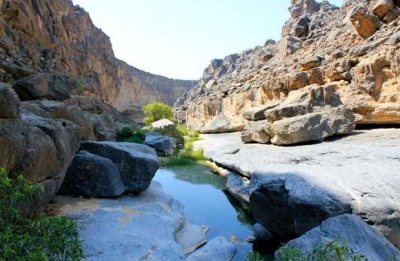
A wadi is a freshwater ecosystem and a type of fluvial landform, which is considered any type of geological feature that is related to rivers or streams. The term wadi comes from both the Arabic and Hebrew languages. Specifically, it refers to a dry riverbed that contains water during rainy seasons and is located in a valley-like area of the desert.
Characteristics Of a Wadi
Wadis are generally located in the flat or slightly rolling areas of deserts and often leads to dry lakes as well. A wadi can be recognized by its braided appearance, which is caused by a lack of constant water flow and an excess of sediment build-up. Sometimes, this sediment may collect in significant amounts, blocking water flow and effectively changing the direction of seasonal rivers. In addition to the low water levels, wind also affects sediment buildup by bringing in dry sands that collect on top of moist sand.
The bottoms of wadis are often covered in sand and loose gravel. The lower levels of this sediment are often packed very densely. This means that during rainy season, water is not quickly absorbed by the ground and has nowhere to drain, resulting in rapid flooding. Flash flooding in wadis is made even more dangerous because of the previously mentioned directional changes, which can send waters into communities unexpectedly.
Credit: World Atlas
Picture Credit : Google




